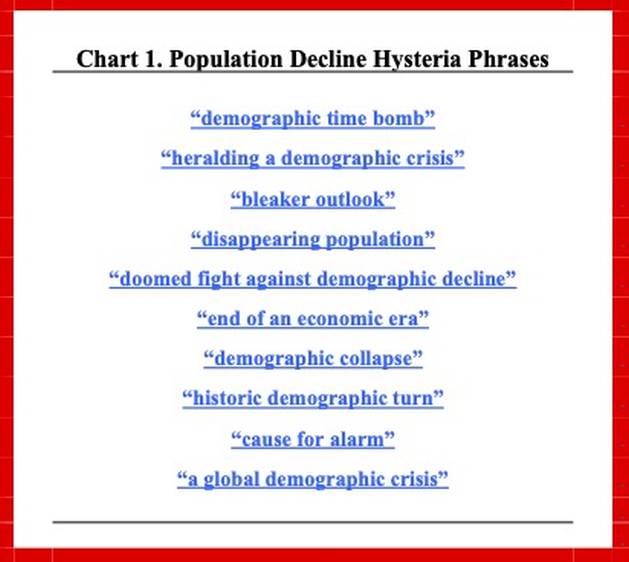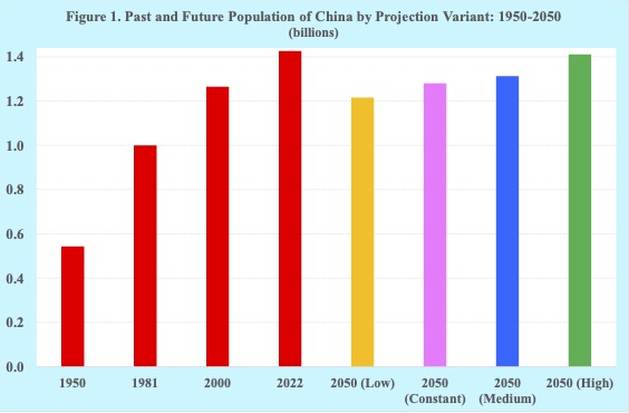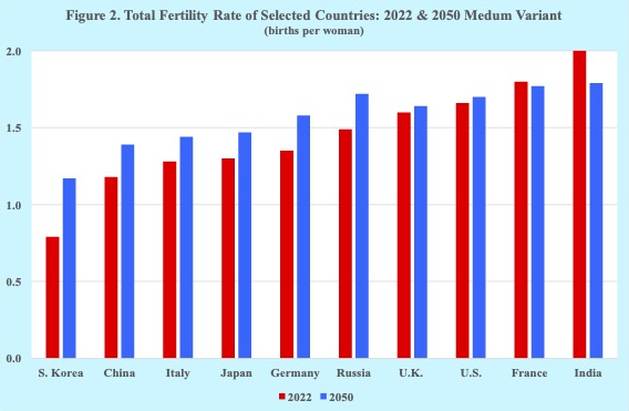Population Decline Hysteria & More Ponzi Demography — Global Issues
PORTLAND, USA, Feb 01 (IPS) – China’s announcement on 17 January 2023 that its population had declined for the first time in 60 years has fostered population decline hysteria and promoted more Ponzi demography in many parts of the world.
Pro-population growth advocates, including many policy makers, traditional economists, business leaders, conservative writers and media commentators, are advancing the hysteria of demographic gloom and doom following the Chinese government’s announcement of a decline in the world’s largest population.
China’s population decline was reported to be 850,000, which is the difference between 9.56 million births in 2022 against 10.41 million deaths. With China’s population at 1.4126 billion, the reported decrease of 850,000 amounts to 0.06 percent.
Much of the media has described China’s population decline with various hysteria phrases, including “demographic time bomb”, “disappearing population” and “demographic collapse” (Chart 1).

The population decline hysteria has in turn facilitated the promotion of Ponzi demography, which calls for sustained robust rates of population growth. Ponzi demography is basically a pyramid scheme that generates more money, power and influence for some by adding on more and more people through natural increase and in some cases immigration.
Its underlying strategy is relatively straightforward: privatize benefits and profits and socialize burdens and costs incurred from increased population growth. Ponzi demography, however, is clearly unsustainable. Populations cannot continue to grow indefinitely without having serious social, economic, environmental and climatic consequences.
The unsustainability of Ponzi demography, however, doesn’t seem to be a concern of those calling for continuing, robust population growth with no endpoint in sight. The unsustainability and critical consequences of long-term population growth are typically ignored, dismissed or trivialized.
Instead of getting caught up with population decline hysteria and Ponzi demography, it’s prudent, instructive and advisable to review the past growth of China’s population, examine its likely future growth, and consider some of the major challenges posed by those expected demographic changes.
China’s population of 1.4126 billion people in 2022, which represents 18 percent of the world’s total, grew rapidly during the recent past. In 1950 the Chinese population was slightly more than a half a billion. China’s one billion population milestone was reached in 1981. By the close of the 20th century, China’s population had grown to approximately 1.3 billion by (Figure 1).

China’s future population over the coming decades depends largely on the course of the country’s fertility rate. If its fertility rate of 1.18 births per woman were to remain constant at its current level, the Chinese population at midcentury is projected to decline to 1.28 billion, a decrease of about 10 percent.
The often-cited United Nations medium variant population projection assumes China’s fertility rate will increase slightly over the coming several decades, reaching 1.39 births per woman by 2050. If that were to occur, China’s population in 2050 is again projected to decline, reaching 1.31 billion.
Under the UN high variant population projection, China’s fertility rate is a half child higher than medium variant, i.e., 1.89 births per woman by 2050. The high variant projection results in China’s population in 2050 remaining essentially unchanged at its current size of 1.41 billion.
Alternatively, fertility in the UN low variant population projection is a half child lower than the medium variant, i.e., 0.89 births per woman by 2050. The expected 2050 population of China in the low variant projection is 1.22 billion, a decrease of 15 percent from its current population.
China is not alone in its low fertility rate. Approximately 100 countries worldwide have a fertility rate below the replacement level of 2.1 births per woman.
Moreover, the fertility rates of some thirty countries in 2022 were less than 1.5 births per woman. Several of those countries had fertility rates that were roughly half or less than the replacement level, including China, Italy and South Korea, and consequently are confronting population decline (Figure 2).

The low fertility rates of today, including China’s, are expected to increase somewhat in the coming decades. However, despite the desires, policies, and programs of governments to raise fertility levels, expectations of a return to replacement level fertility in the foreseeable future can be simply described as future fertility fantasies. Consequently, the current populations of some 50 countries, including China’s, are projected to be smaller by midcentury.
In addition to population decline, China as well as many other low fertility countries are experiencing demographic ageing. The median age of China’s population is expected to continue rising during the 21st century. China’s median age increased from 18 years in 1970 to nearly 39 years today. By 2070 the median age of China’s population is expected to be 55 years, or three times the median age of the population in 1970.
Besides its expected population decline, demography ageing presents a major challenge for China. The consequences of the demographic realities of older population age structures with declining numbers of young workers supporting growing numbers of the elderly are likely unavoidable.
Consequently, careful rethinking, comprehensive evaluations and major adjustments, some likely to be unpopular with the public such as raising the official retirement age, will be needed.
In addition to China, many countries with below replacement fertility are expected to face declining populations and older age structures over the coming decades. In contrast, many other countries, especially in Africa, with fertility levels of more than four births per woman are expected to have rapidly increasing populations and relatively young age structures throughout the century.
The net result of these substantial country differences in future population growth rates is that the world’s current population of 8 billion is projected to continue increasing. Over the next forty years, the world’s population is expected to add another 2 billion people, reaching 10 billion around 2058.
So, in conclusion, it’s time to stop fostering population decline hysteria with its doom and gloom and promoting Ponzi demography of unsustainable, continued robust population growth. It’s time to recognize, understand and analyze today’s demographics and their likely trends over the coming decades. And also importantly, it’s time for countries to prepare for the formidable challenges of their respective expected demographic realities in the 21st century.
Joseph Chamie is a consulting demographer, a former director of the United Nations Population Division and author of numerous publications on population issues, including his recent book, “Population Levels, Trends, and Differentials”.
© Inter Press Service (2023) — All Rights ReservedOriginal source: Inter Press Service
Check out our Latest News and Follow us at Facebook
Original Source







